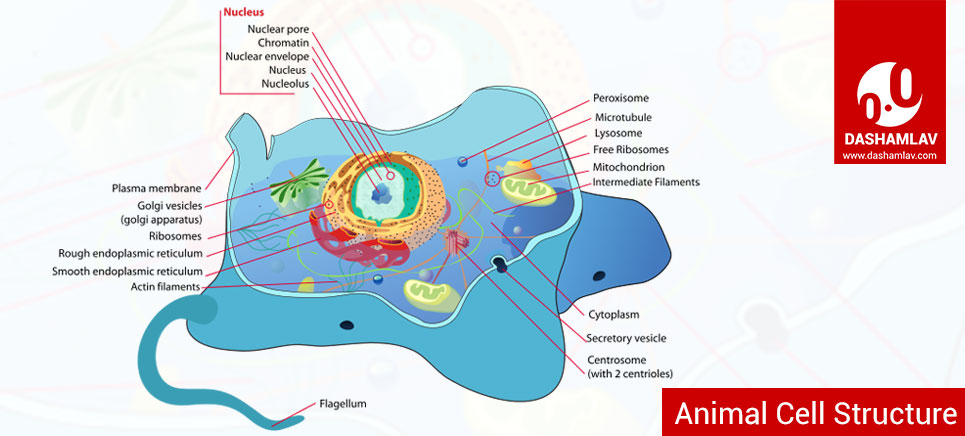Cell wall and cell membrane are important parts of the cell structure. These two layers perform a number of important functions in plant and animal cells. Apart from the fact that both cell wall and cell membrane cover the insides of the cell — there are several differences between the two.
Cell Membrane
It is a thin layer covering the cell. It is also called the plasma membrane. The cell membrane encloses the nucleus and cytoplasm. Nucleus and cytoplasm are sometimes jointly referred to as protoplasm as they constitute the living part of the cell. It is due to the cell membrane that cell is not only enclosed but it also has a proper shape.
There are tiny pores in the cell membrane. It is these pores through which food and oxygen enter the cell and waste products like carbon dioxide (CO2) comes out. The cell membrane controls the movement of substances inside the cell as well as the ones which are outside it.
Cell Wall
Cell Wall is a thick layer around a plant cell, just outside the cell membrane. Cell wall and it is made up of a tough material called cellulose. It not only gives shape to a plant cell but also provide strength to it and holds it together.
Plants cannot move from one place to another, so they require protection against extremities of surrounding conditions. From high-speed wind, moisture in the atmosphere, or temperature variation, the tough cell walls protect the plant against all odd situations.
Differences between Cell Wall and Cell Membrane
| Property | Cell Wall | Cell Membrane |
|---|---|---|
| Type |
Cell wall is not a cell organelle. | Cell membrane is a cell organelle. |
| Presence | Cell wall is found only in plants (and in some fungi, bacteria, algae etc.) | Cell membrane exists in all types of living cells – plants, animals, fungi, algae, bacteria etc. |
| Composition | Cell wall is primarily made up of cellulose. | Cell membrane is made up of lipids and proteins. |
| Elasticity | Cell wall is non-elastic in nature. | Cell membrane is elastic. |
| Thickness | 20 – 80nm. Thickness grows with time. | 7.5 – 10nm. Thickness remains same. |
| Functions | Shaping the cell, protection from the external environment. | Cell division, signal reception, motility conduction, sexual reproduction etc. |
| Permeability | Cell wall is fully permeable. | Cell membrane is Semi-permeable. |
| Metabolic activity | Cell wall is metabolically inactive and non-living part of the cell. | Cell membrane plays an important role in metabolism and it is a living organelle of the cell. |
| Presence of receptors | Cell wall does not have receptors. | Receptors are present in the cell membrane to receive signals from outside. |
| Nutrition | Cell wall is made of non-living material, there it does not need any nutrition or energy. | Cell membrane requires nutrition just like any other organelle. |
Use the citation below to add this article to your bibliography
"Cell Wall and Cell Membrane: Differences in Structure and Functions." Dashamlav.com. Web. 22 October 2024. <https://dashamlav.com/difference-between-cell-wall-and-cell-membrane-structure-functions/>
Dashamlav.com, "Cell Wall and Cell Membrane: Differences in Structure and Functions." Accessed 22 October 2024. https://dashamlav.com/difference-between-cell-wall-and-cell-membrane-structure-functions/
"Cell Wall and Cell Membrane: Differences in Structure and Functions." (n.d.). Dashamlav.com. Retrieved 22 October 2024 from https://dashamlav.com/difference-between-cell-wall-and-cell-membrane-structure-functions/

